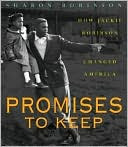
Wright, Randall. 2004. HUNCHBACK. New York: Henry Holt. ISBN 0805072322 [Suggested Grade Levels 5-8]
REVIEW
There was a time when Castle Marlby served as a “seasonal retreat” for the royal family. It was a glorious time then when the royal guard heralded the arrival of kings and princes, a time when the cooks prepared lavish feasts and jugglers and acrobats entertained workers and guests. But those times are long gone. Hodge, a young hunchbacked orphan who lives and works at Castle Marlby, has heard about those days of old and wishes for their return. And, Hodge has another wish. He dreams of someday serving a prince. The fact that he performs the most menial tasks at the castle, including cleaning out the pit beneath the latrines, does not tarnish this hope. When rumors begin to surface that the castle will host a royal visit, no one is more excited than Hodge. The rumors are true and Prince Leo arrives quietly without fanfare. Everyone is suspicious of the prince and people wonder if he is a visitor or a prisoner. Hodge, however, has complete faith in Prince Leo, especially after Prince Leo befriends him. Hodge becomes his faithful servant, but is he just an innocent pawn? When Prince Leo mysteriously disappears, adventure and political intrigue ensue. Hodge tumbles into a world outside the castle walls where he proves to be a hero amid battles and danger.
There was a time when Castle Marlby served as a “seasonal retreat” for the royal family. It was a glorious time then when the royal guard heralded the arrival of kings and princes, a time when the cooks prepared lavish feasts and jugglers and acrobats entertained workers and guests. But those times are long gone. Hodge, a young hunchbacked orphan who lives and works at Castle Marlby, has heard about those days of old and wishes for their return. And, Hodge has another wish. He dreams of someday serving a prince. The fact that he performs the most menial tasks at the castle, including cleaning out the pit beneath the latrines, does not tarnish this hope. When rumors begin to surface that the castle will host a royal visit, no one is more excited than Hodge. The rumors are true and Prince Leo arrives quietly without fanfare. Everyone is suspicious of the prince and people wonder if he is a visitor or a prisoner. Hodge, however, has complete faith in Prince Leo, especially after Prince Leo befriends him. Hodge becomes his faithful servant, but is he just an innocent pawn? When Prince Leo mysteriously disappears, adventure and political intrigue ensue. Hodge tumbles into a world outside the castle walls where he proves to be a hero amid battles and danger.
Wright has done a marvelous job of keeping the story authentic to its setting. Descriptions of medieval life are exceptional. Even the dialect used by Tom, the chandler’s boy, as he insults Hodge is amusing: “‘Where’s my breakfast, ye dolt-headed serving wench?’” With memorable characters and an engaging plot, this evenly paced adventure novel raises questions about loyalty and inner convictions. Readers will root for Hodge as this simple, poor underling battles to do right.
CONNECTIONS
Readers can research medieval times and discover how people lived and worked in a castle. Readers can choose a type of worker (e.g. knight, chandler, kitchen maid, scurry, porter, etc.) and illustrate his/her attire and describe his/her duties.
RELATED BOOKS
Books about orphans in the middle ages:
Avi. CRISPIN: THE CROSS OF LEAD. ISBN 0786808284
Morris, Gerald. THE SQUIRE’S TALE. ISBN 0395869595
By S. Zulema Silva Bewley




































